

Matt Robinson
2026 Skoda Fabia 130 review: Quick drive
27 Minutes Ago
In-vogue black add-ons and SUV appeal aside, the Qashqai Midnight Edition is a civilised, if uninspiring option in an ever-growing segment.
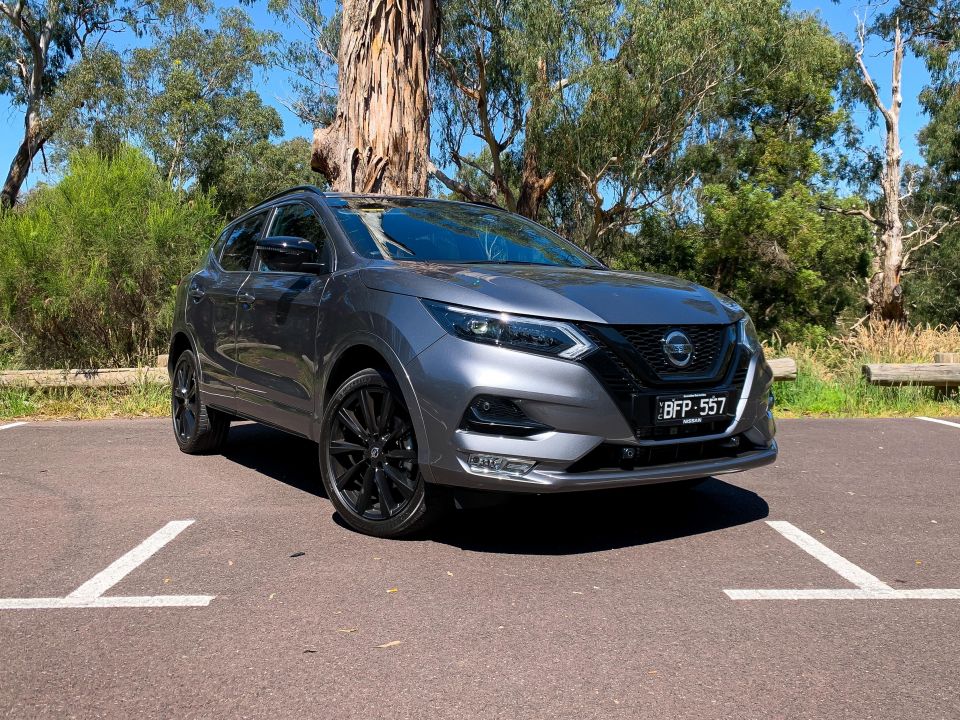
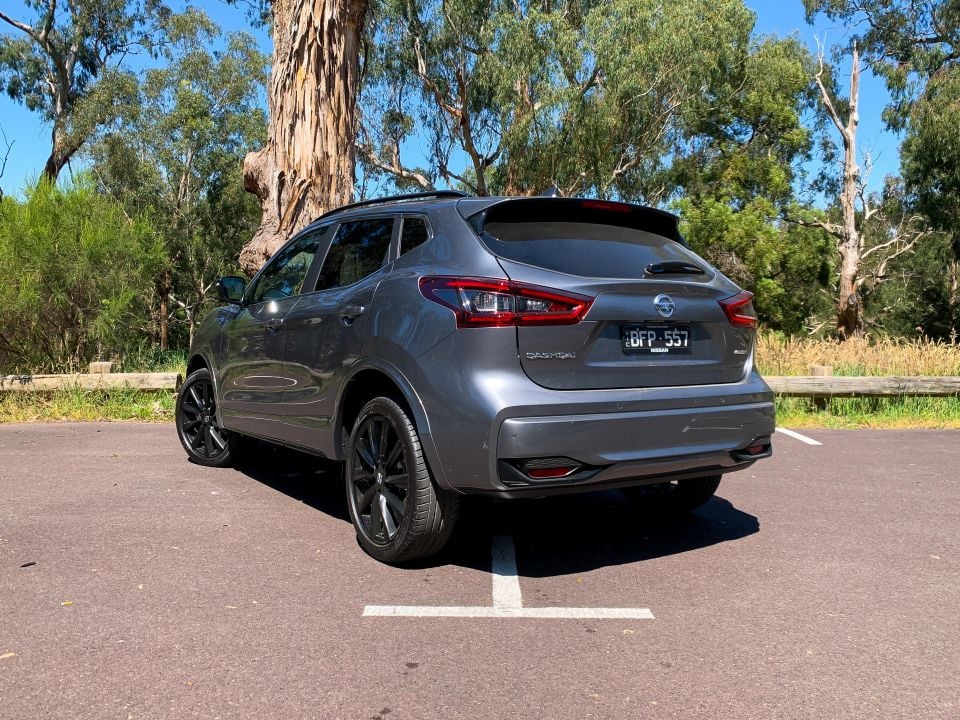

Marketplace Editor
New from
$27,990
excl. on-roads

Marketplace Editor
New from
$27,990
excl. on-roads


Marketplace Editor
New from
$27,990
excl. on-roads

Marketplace Editor
New from
$27,990
excl. on-roads
Quickly see how this car stacks up against its competition. Select any benchmark to see more details.
Where expert car reviews meet expert car buying – CarExpert gives you trusted advice, personalised service and real savings on your next new car.
It’s no secret the Nissan Qashqai is one of the trailblazers in the compact crossover segment. Since the first generation launched globally in 2006 it has won the hearts of millions around the world.
Nissan was definitely ahead of the curve with both the Qashqai (originally known here as the Dualis) and the more quirkily-styled Juke, and for the longest time both nameplates have been sales leaders in various markets despite their advancing age.
The second-generation Qashqai was first launched in 2013, and then facelifted in 2017. In that time the Nissan’s competition set has grown significantly from a handful of rivals to a dizzying array.

Here we have the 2021 Nissan Qashqai Midnight Edition, a styling and equipment special bringing edgier looks to the (already handsome) design and some extra kit usually reserved for the flagship Ti grade.
It lands in showrooms in November priced from $35,900 plus on-road costs, sitting one rung down from the top-spec Ti.
Can this stealthy new variant still kick it with the latest crop of small SUVs? Or is the Qashqai starting to show its age?
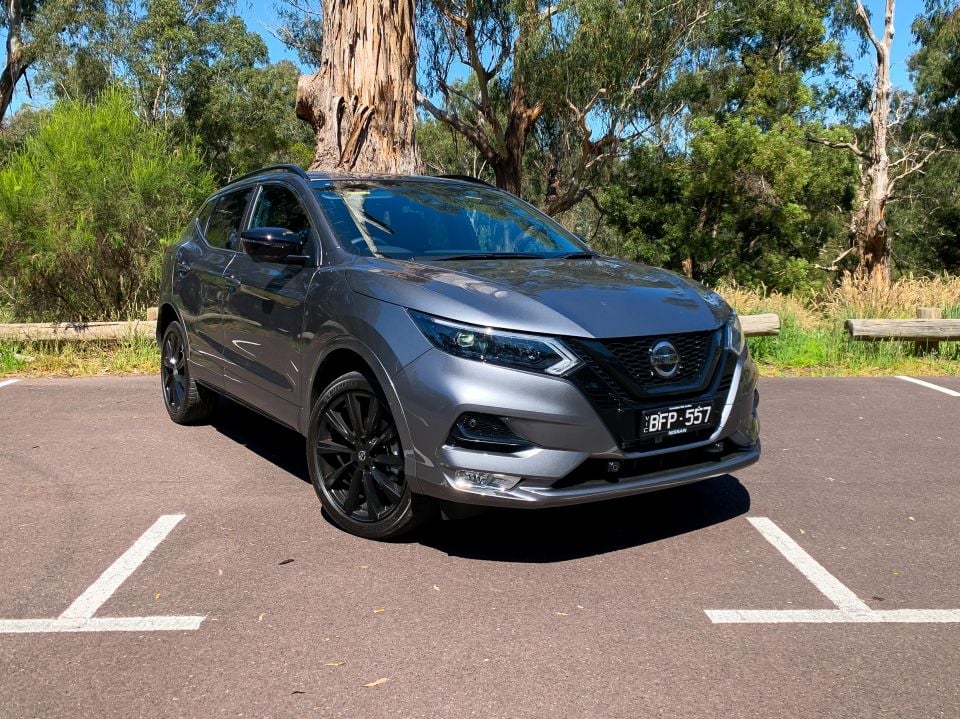
As noted earlier, the Qashqai Midnight Edition is priced from $35,900 before on-roads, putting at the upper end of the mainstream small SUV class in terms of pricing.
Within Nissan’s own range, the Midnight Edition sits between the ST-L ($34,300) and Ti ($38,790) in terms of pricing and spec.
Beyond the confines of the Nissan showroom, the Qashqai Midnight Edition is up against the likes of the Kia Seltos Sport+ AWD ($37,490), Mazda CX-30 G25 Touring ($36,490) and then Skoda Karoq 110TSI ($35,990).
The Qashqai’s platform twin, the Renault Kadjar, is also priced in the vicinity at its flagship specification at $37,990.
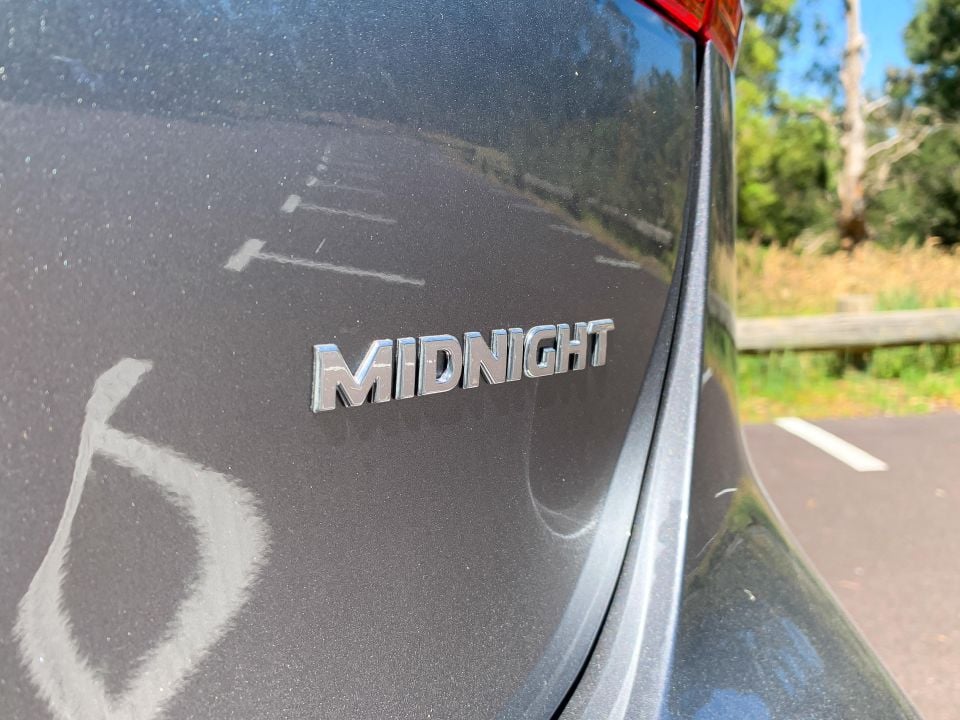
It’s worth noting the Qashqai is on the larger side of ‘small’ when it comes to VFACTS segmentation, and could even be cross-shopped against slightly larger ‘medium’ SUVs like the Mazda CX-5 Maxx Sport FWD ($36,290) and Kia Sportage SX+ ($37,690).
There’s no options for the Midnight Editions other than premium paints, like the Gun metallic you see here, which add $595.
MORE: 2021 Nissan Qashqai Midnight Edition pricing and specs
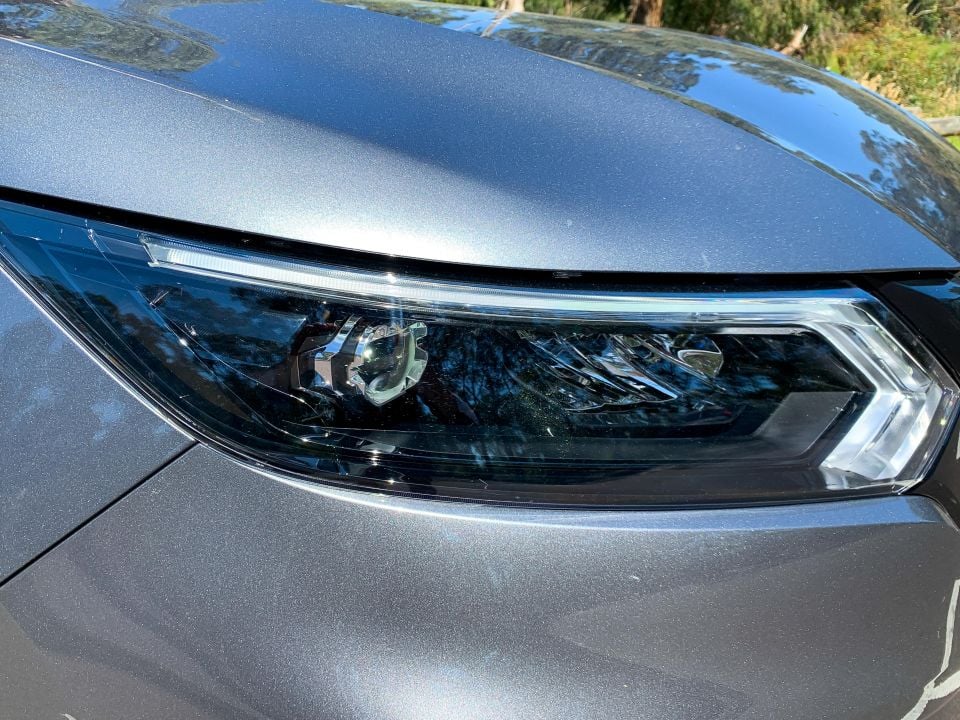

Buy your new car without the stress. It's fast, simple and completely free.

Great service from Travis and team, second time I have used this business would not hesitate to recommend them to anyone
Craig C.
Purchased a Ford Ranger in Sunshine Coast, QLD
CarExpert helped Craig save thousands on his Ford Ranger, now let us save you on your next new car.
Find a dealThe Midnight Edition is the latest in a line of Qashqai special editions sitting below the top-spec Ti, bringing a high-end look and feel with some added equipment over the mid-range ST-L.
Key additions for the Qashqai Midnight Edition include:
Equipment carried over from lower grades includes a 7.0-inch touchscreen with satellite navigation and live traffic, wired Apple CarPlay and Android Auto, manual air-conditioning, leather-accented steering wheel and shifter, 360-degree camera system, power folding heated mirrors, rear privacy glass, roof rails, autonomous emergency braking (AEB), blind-spot monitoring, and rear cross-traffic alert.
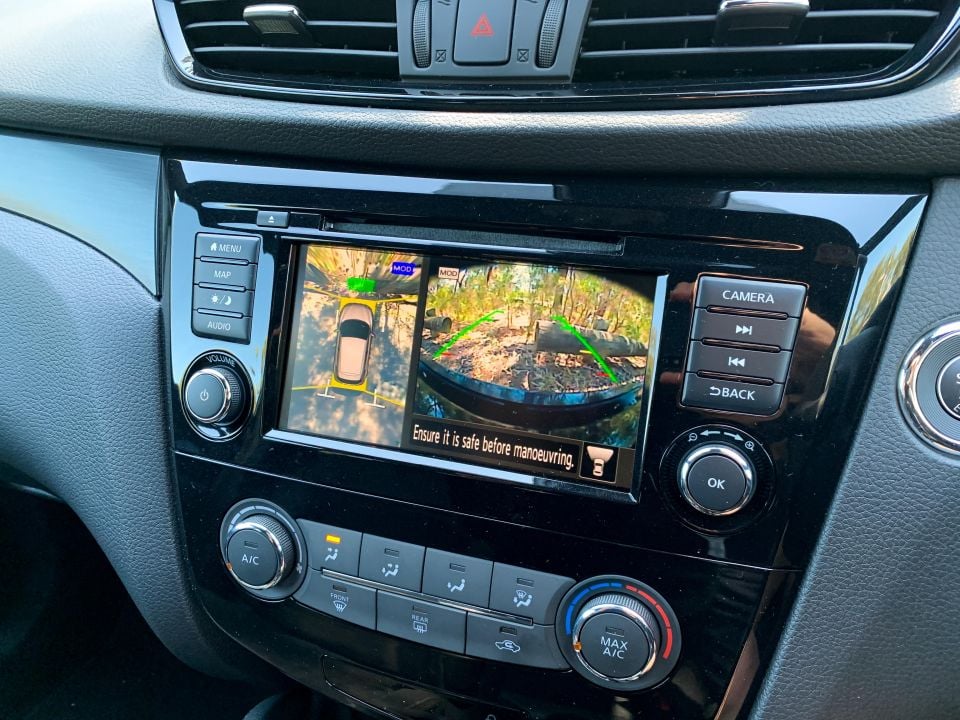
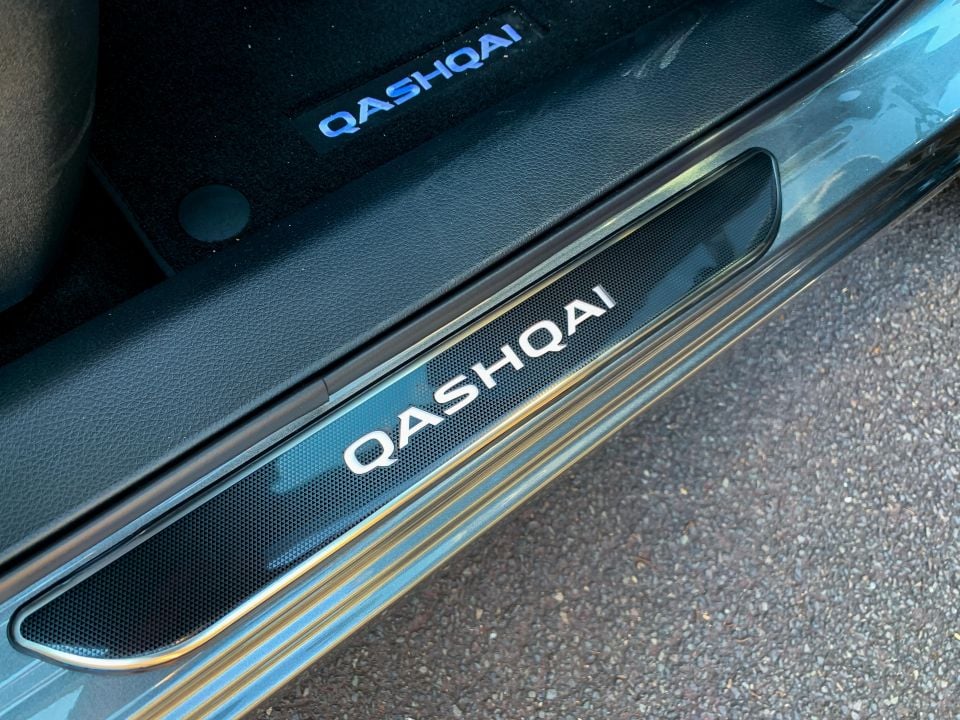
However, the Midnight Edition also de-selects some of the kit you’ll find in the ST-L, including six-way power adjustment for the driver’s seat with four-way lumbar, and front seat heating.
Despite being priced on the higher side of the segment, the Midnight Edition also misses out on features still reserved for the top-spec Ti such as adaptive cruise control, dual-zone climate control, a panoramic sunroof, an auto-dimming rear-view mirror, a Bose premium audio system, and lane-keeping assist.
It’s a shame Nissan persists with the old-school approach of leaving most of the good stuff you see on its marketing material for just the flagship grade, without offering the option further down the range.
Further, Australia continues to go without the suite of driver assists that facilitate semi-autonomous highway driving like overseas models – keeping in mind local Qashqai models come from the same Sunderland, UK factory as the European ones – especially given the increasing amount of rivals now including these kind of features as standard or optionally available.
Overall, the Qashqai Midnight Edition packs a decent amount of features but has some odd omissions especially at this price point.
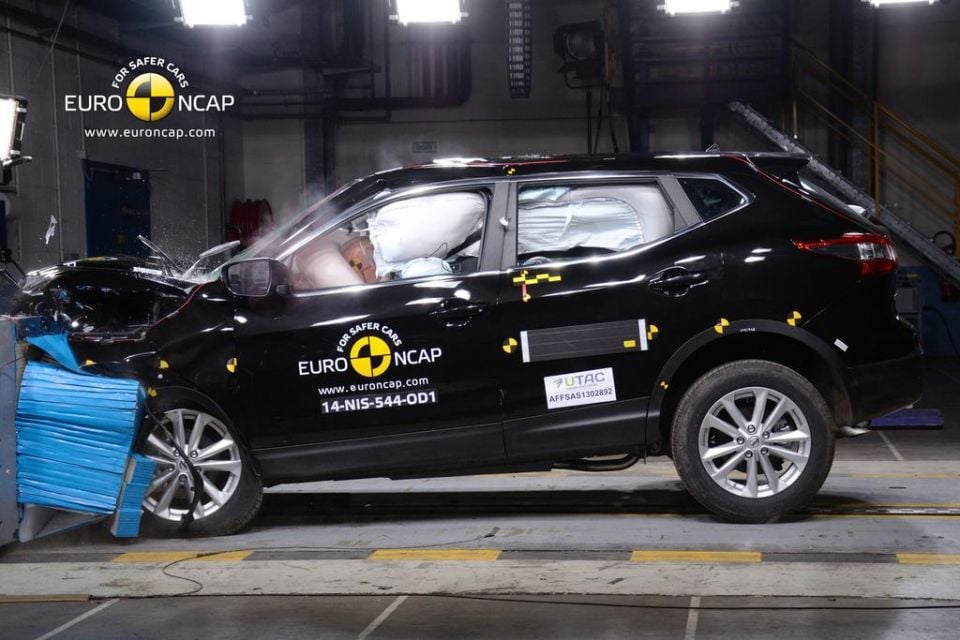
The Qashqai wears a 2017-datedfive-star ANCAP safety rating, based on tests carried out by sister firm Euro NCAP.
Using an older test criteria and scoring system, the Qashqai managed a very impressive 36.56 out of 37.00 overall, including 15.56/16.00 for the frontal offset test, a perfect 16 out of 16 for the side impact test, as well as 2.00/2.00 for the pole test.
While the latest testing criteria from ANCAP and Euro NCAP puts a heavier focus on vulnerable road user protection as well as safety systems which help to avoid crashes all together, prospective buyers can take piece of mind with the fact the Qashqai should prove to be very safe in the event of a collision, given this kind of vehicle is typically purchased by families.
Dual frontal, side chest and side head-protecting airbags (curtains) are standard, as is autonomous emergency braking (AEB City & Interurban). Lane support systems are available on some variants, and in the case of the Midnight Edition it’s fitted with lane departure warning but not lane keep assist like the Ti.
ST+ models and up also fit a 360-degree camera system with moving object detection – something that’s still pretty rare at this end of the market. Oddly, pedestrian detection for the AEB system is reserved for the Ti.
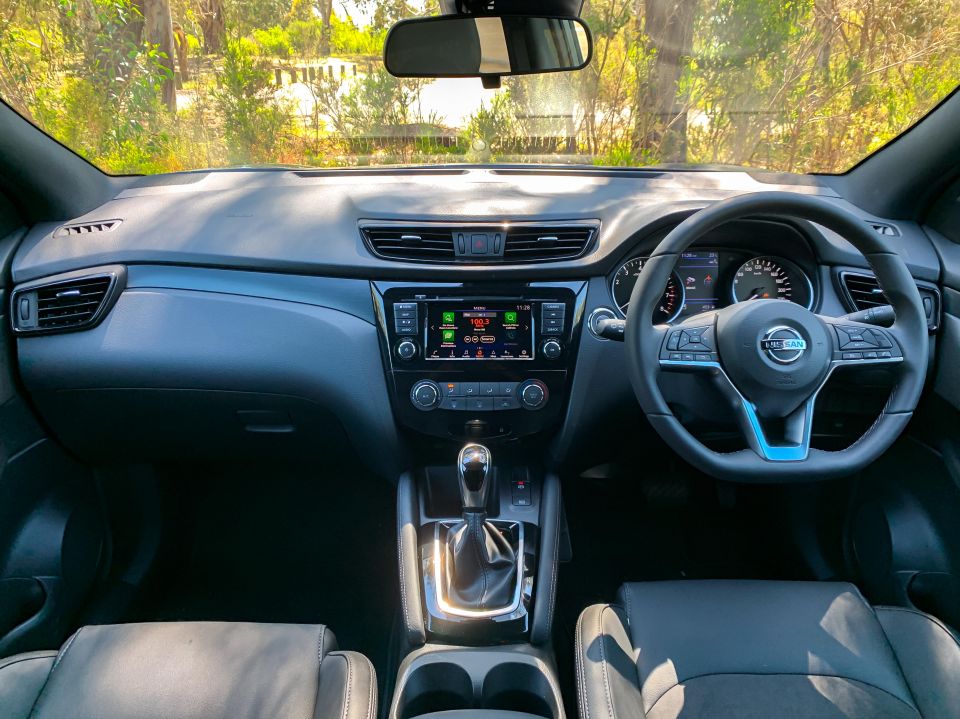
One of the second-generation Qashqai’s long-standing strengths is the premium look and feel of the interior, and the Midnight Edition doesn’t do much to change that.
As many rivals are saving money by lining cabins with cheap, hard and scratchy plastics, the Qashqai’s upper and mid-level sections of dashboard and doors are lined with soft-touch surfaces. The padded knee rests along the transmission tunnel with contrast stitching are thoughtful additions and add a touch of class, too.
The overall layout of the dashboard and design is starting to show its age, though. A small 7.0-inch touchscreen is nestled in the dash a little lower than eye-level, and the switchgear on the centre stack certainly isn’t visually exciting.

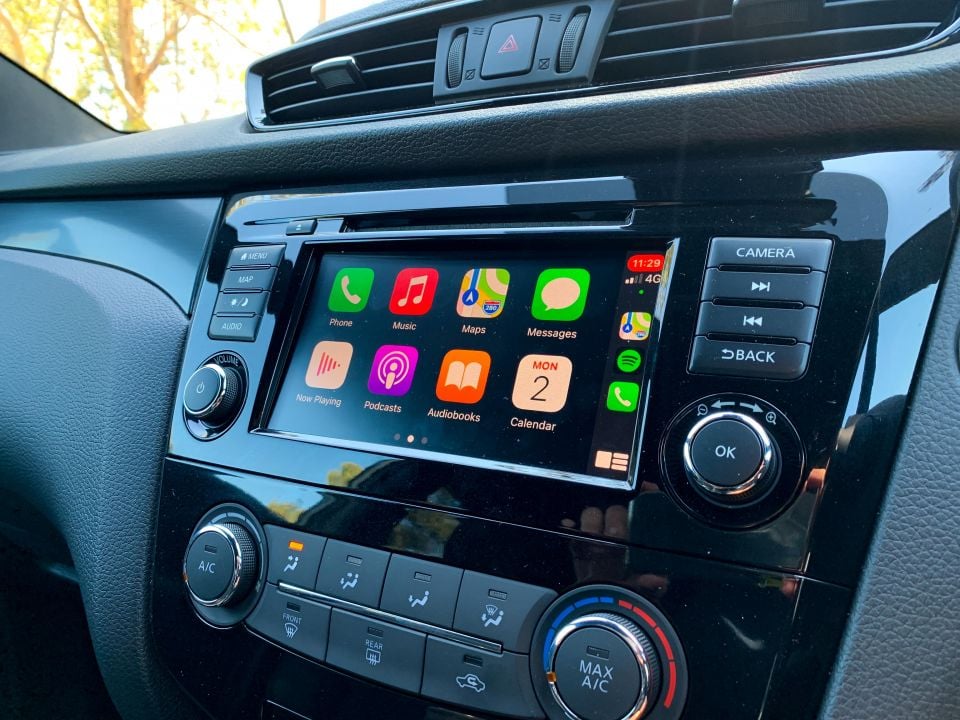
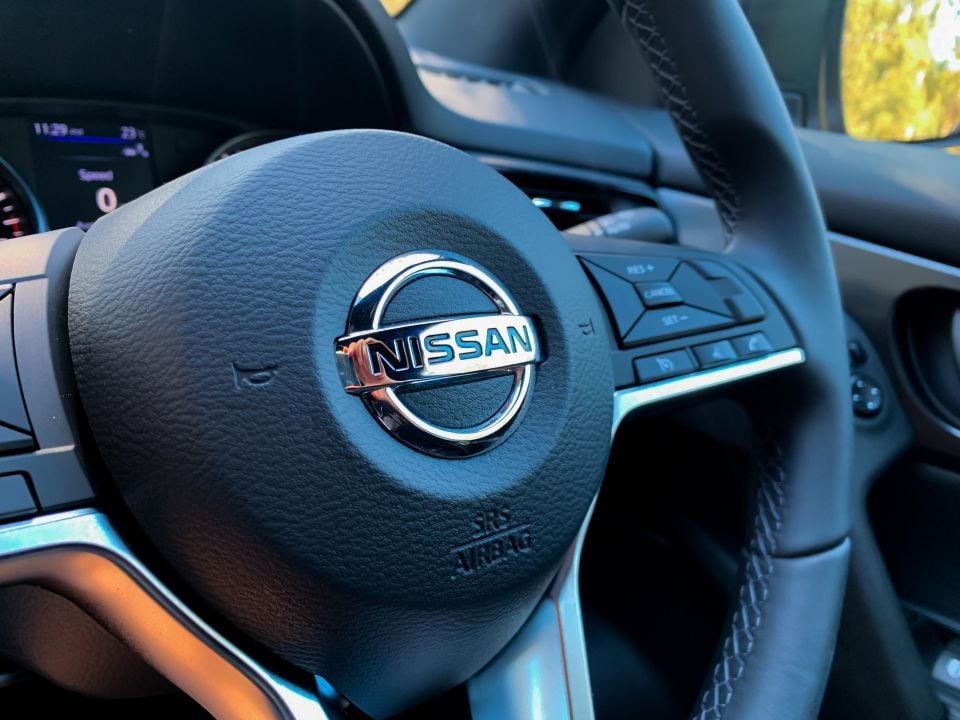
It’s actually sort of like an Infiniti or previous-generation Lexus product in that the material and build quality is top notch, but some of the tech and design is a bit dated. Take that as you will.
Ahead of the driver there’s conventional analogue dials – which are quite clear and attractive – flanking a driver’s readout showing everything from a digital speed readout to assist systems, turn-by-turn navigation prompts, and toggling vehicle settings.
The flat-bottom steering wheel with contrast stitching has a slight sporting edge, while the thin rim and smaller centre cap gives a nice and clear view of the instrument cluster. Speaking of the steering wheel, you’ll notice several blank buttons where the adaptive cruise control buttons would be.

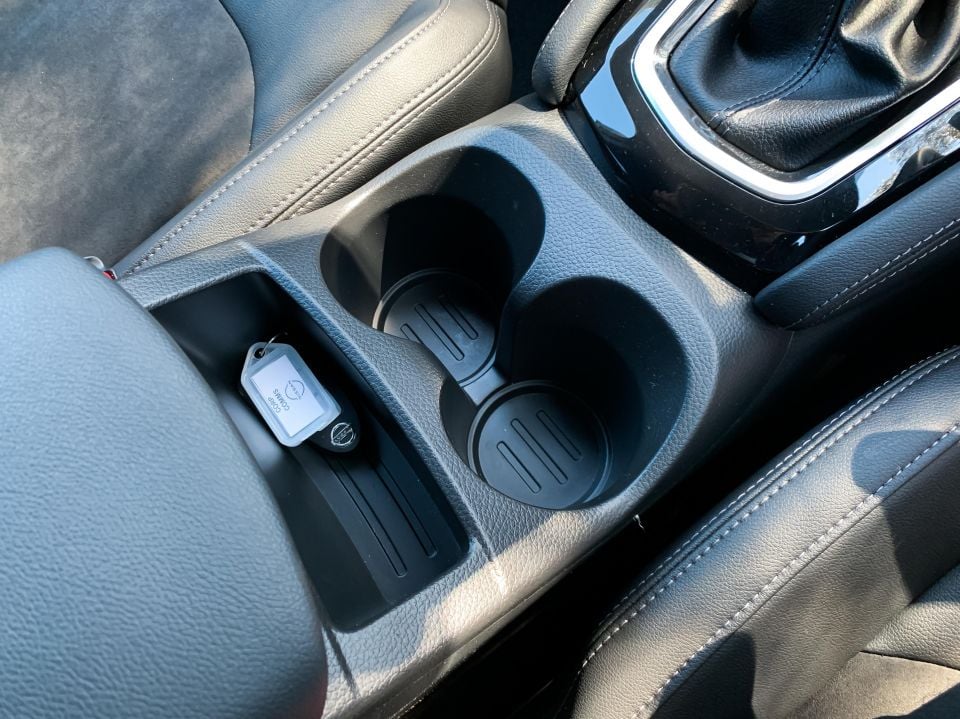

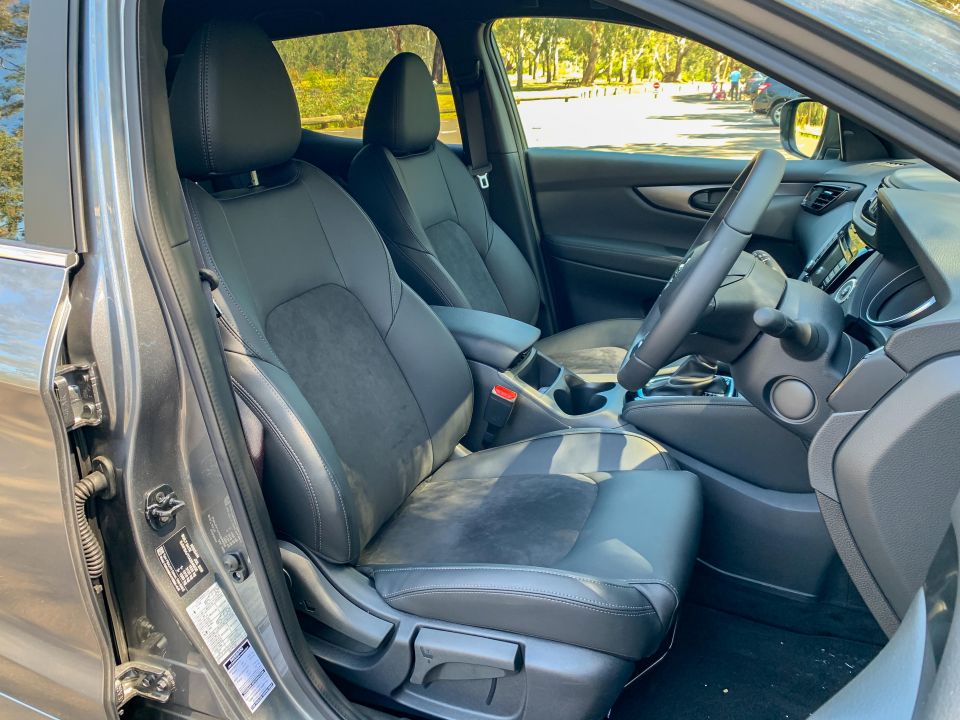
Despite its pricing the Qashqai Midnight Edition gets manual front seats which lack the adjustability of electrically-operated pews, though the seat is comfortable enough and there’s a good range of adjustment. Most people should be able to find a comfortable driving position, but a longer seat base would be nice.
If you’re like me and tend to adjust the seat to be as low as possible, however, you may be disappointed. In its lowest setting the Qashqai’s driver’s seat is perched quite high, giving you the feeling you’re sitting on the car rather than in it. That said, drivers who prefer a more commanding position will probably like this.
Under the front centre armrest there’s a huge storage cubby that could fit a large bottle and an array of other items, but there’s also no phone tray like you might find on some other versions – and this is where the USB port for Apple CarPlay/Android Auto is located so your phone is swimming in this huge empty box.
The door bins are an adequate size and can also fit a decent-sized bottle, though the oddment storage in the centre console leaves a bit to be desired. A tiny front tray ahead of the shifter is too small for most modern smartphones (the electric park brake takes up most of this space), and there’s an open sunglasses holder and two deep cupholders between the centre armrest and shifter.

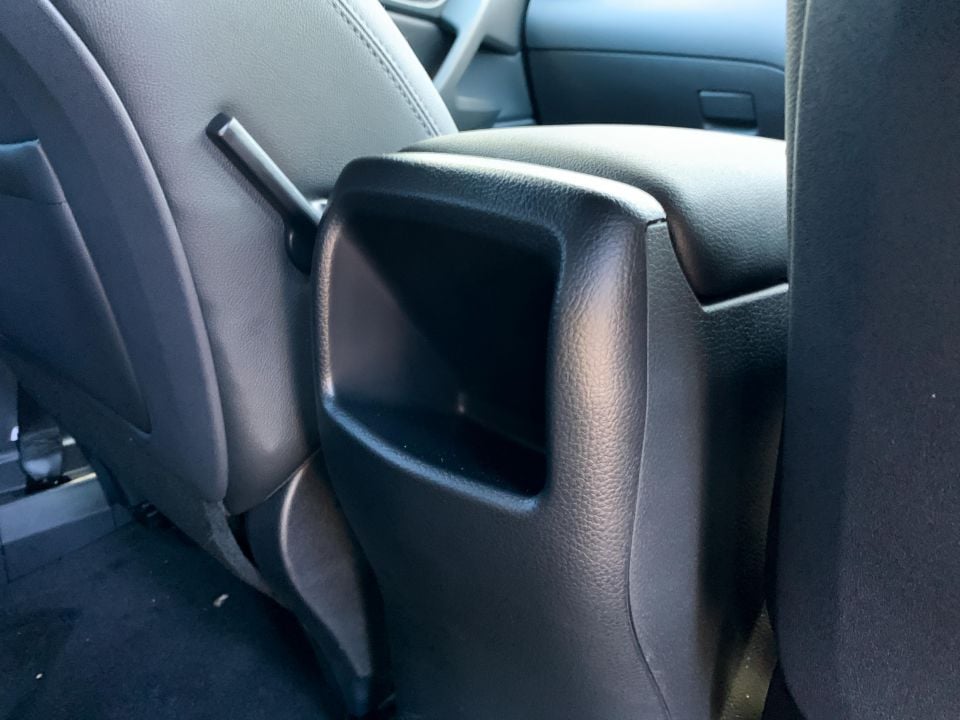
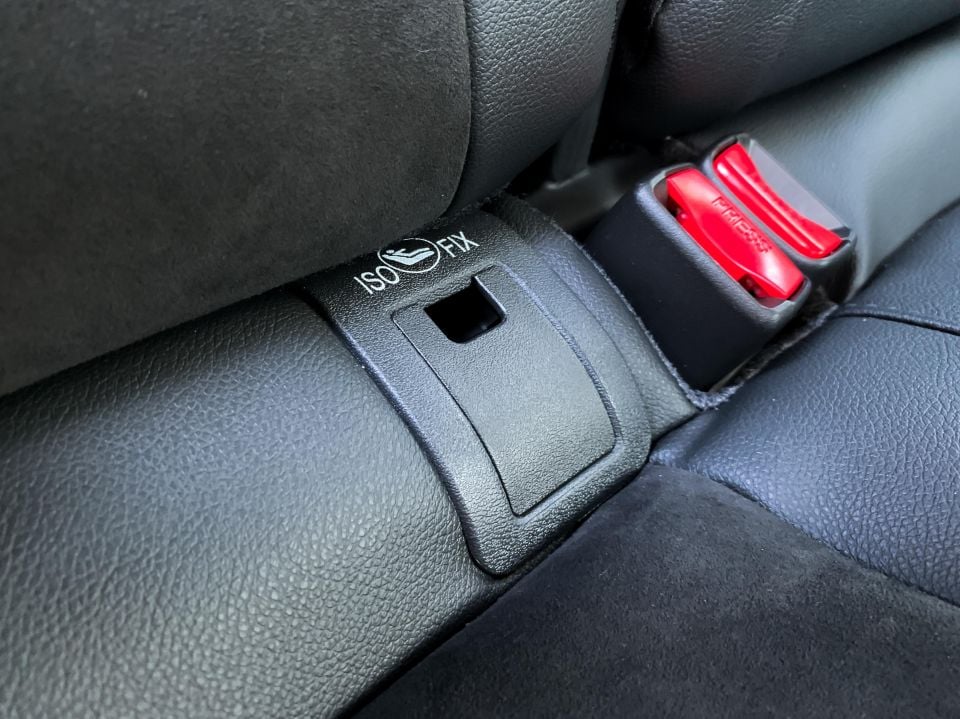
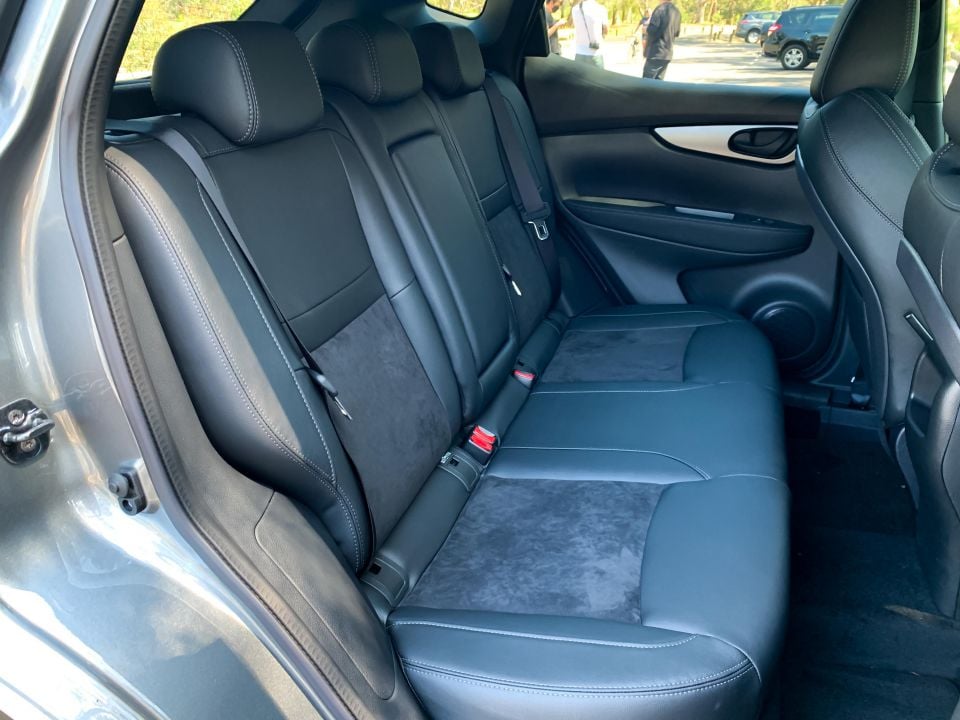
Nissan’s latest infotainment interface is a welcome upgrade from the old unit that went without smartphone mirroring, but the small-ish display and dated graphics still mean the Qashqai lags behind key competitors from Korea and Europe in this space.
That said, we found Apple CarPlay (wired) to work seamlessly and the native satellite navigation maps are nice enough.
I personally take issue with the lack of automatic/dual-zone climate control in a near-$36,000 car, however, and there’s no rear air vents like you get in a Nissan X-Trail (which is on the same platform) or even the Qashqai’s twin-under-the-skin, the Renault Kadjar.
The Qashqai’s back seat remains at the upper end of the class for space and comfort, though it’s far from limo-like.
Decent head- and legroom for taller passengers like myself means you can carry four adults in relative comfort, aided by the large rear glasshouse for good outward vision and a fold-down centre armrest with cupholders.
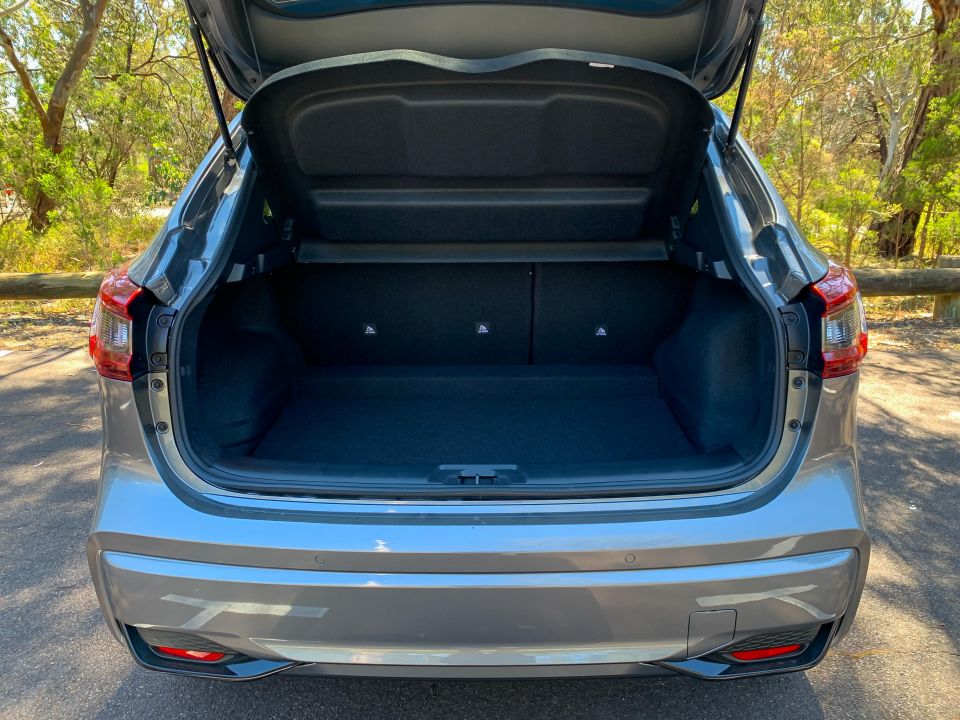
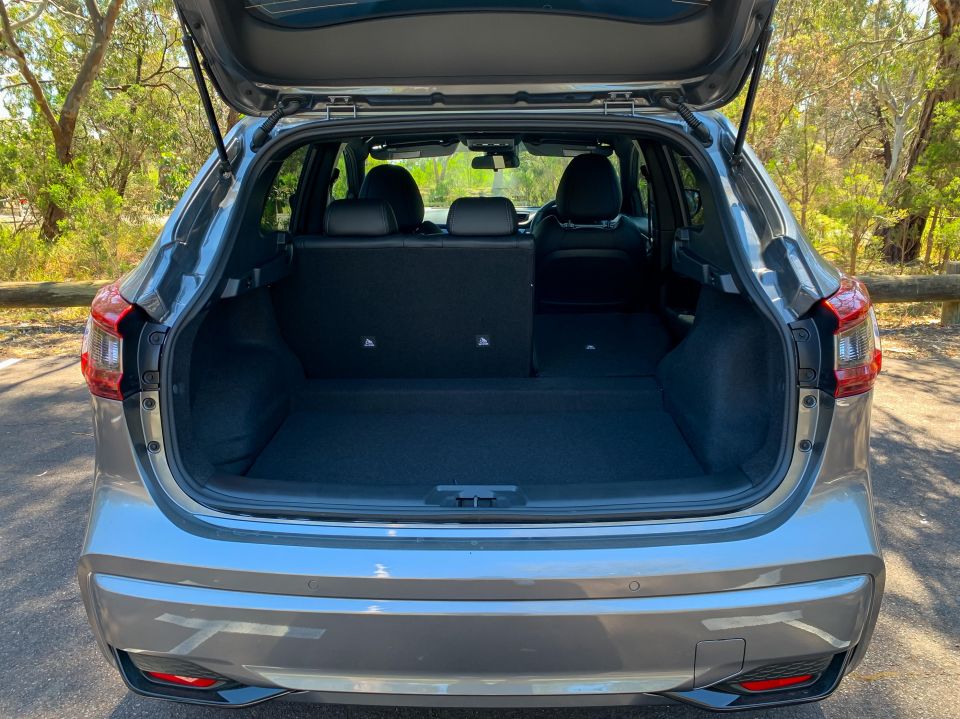
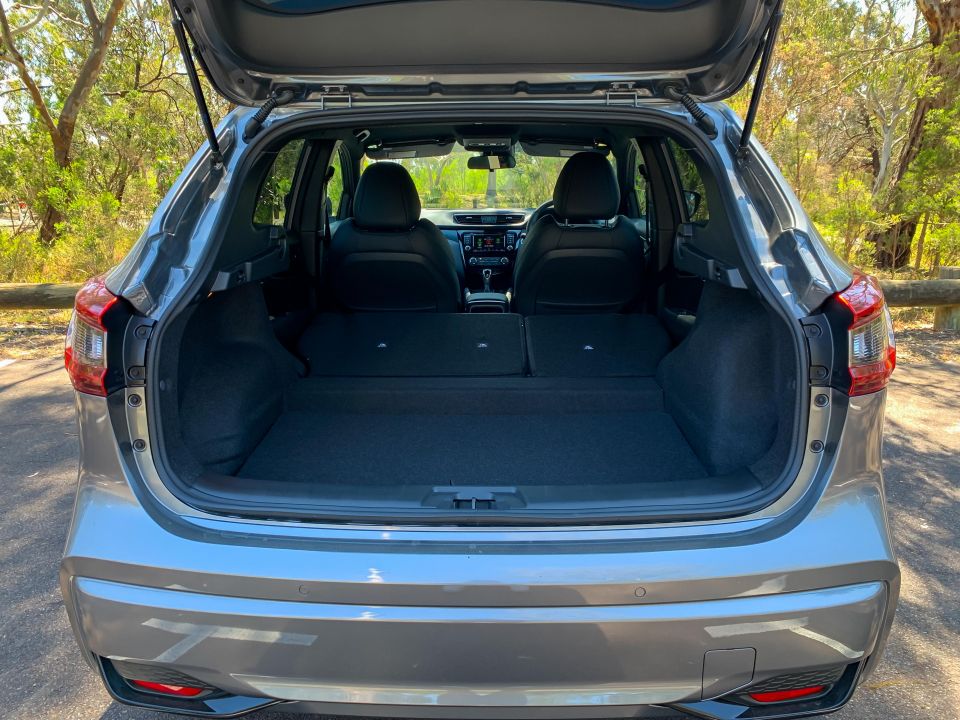
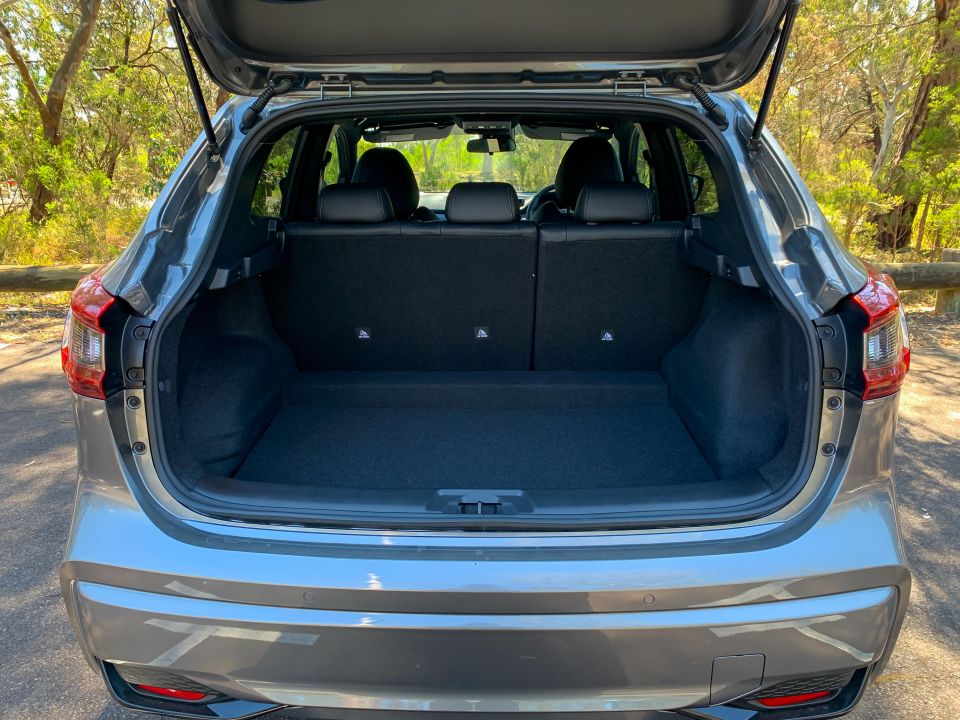
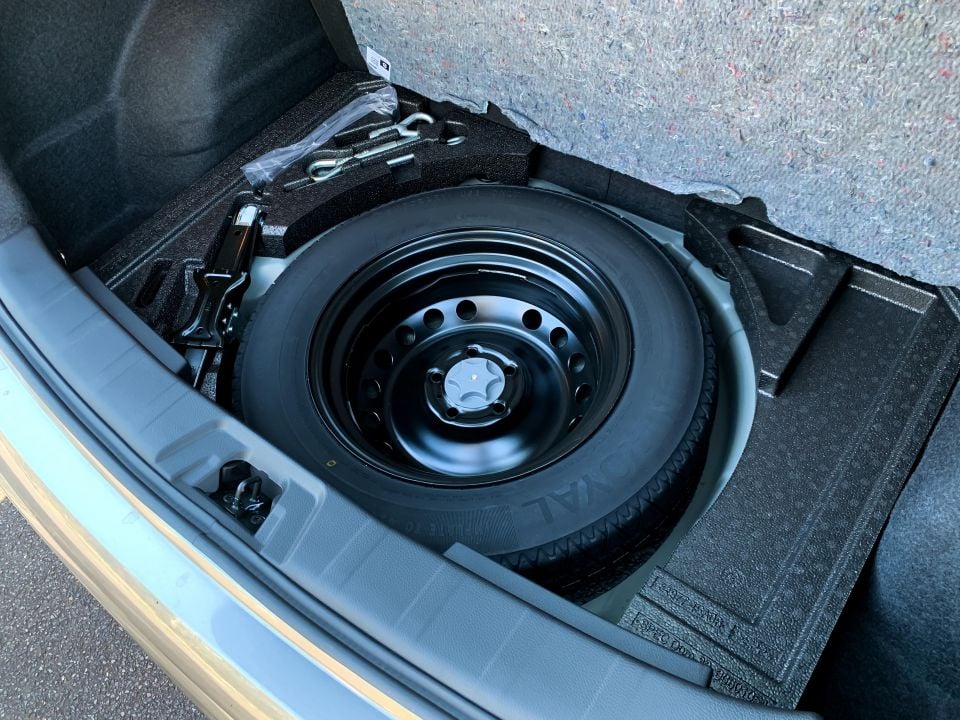
As noted earlier, the Qashqai lacks rear air vents in any trim level, and there’s little else in the way of second-row amenities other than map pockets on the front seat backs and bottle holders in the rear doors. The soft-touch trims of the front doors are also swapped out for hard plastics in the rear, though padded elbow rests do the job fine.
Parents will appreciate the ISOFIX anchor points on the outboard rear seats, and top-tether points for all three rear positions.
Further back, the Qashqai boasts a 430-litre boot with the second row upright, expanding to an impressive 1598L with it folded. The Qashqai has long been a practicality leader in the segment and while it may not have outright bragging rights, it’s a large and usable luggage area that beats out most of its smaller rivals.
The adjustable boot floor means you can minimise the load lip and have an underfloor compartment or maximise available volume, and a space-saver spare wheel lives under the boot floor.

The local Qashqai range is powered exclusively by a 2.0-litre naturally-aspirated four-cylinder petrol engine, developing 106kW of power at 6000rpm and 200Nm of torque at 4400rpm, driving the front wheels via a standard CVT auto.
Punchier turbocharged petrol and diesel engines are offered overseas, as is the option of all-wheel drive and a quick-shifting dual-clutch automatic, but there’s no sign they’re coming to Australia.
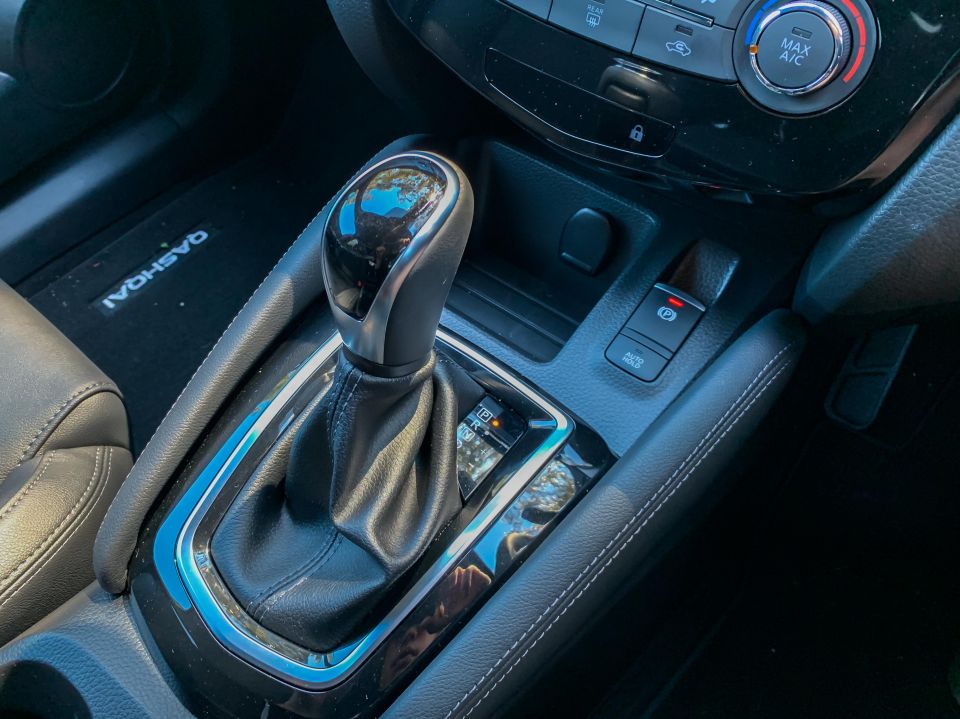
Where expert car reviews meet expert car buying – CarExpert gives you trusted advice, personalised service and real savings on your next new car.
Within the Reanult-Nissan-Mitsubishi Alliance, the Renault Kadjar is available locally with a 1.3-litre four-cylinder turbocharged petrol four offered in the Qashqai overseas. Shared with the Mercedes-Benz A-Class and other compact Benz models, the Kadjar’s motor develops 117kW and 260Nm, with the latter available at a much more accessible 1750rpm.
Should you want to change gears yourself, just the entry-level Qashqai ST offers a standard six-speed manual.
Nissan claims CVT-equipped Qashqai variants use just 6.9L/100km on the combined cycle, and there’s an unusually large 65L fuel tank.

In terms of fuel consumption, the Qashqai will reward you for more time cruising and less time in bumper-to-bumper traffic. A 50km test loop with a mix of stop-start suburban traffic, highways and a stint on the freeway returned an indicated 7.8L/100km – 0.9L up on Nissan’s official combined claim.
With a bit more urban driving and stop/start traffic, you’ll see the Qashqai’s trip computer dance around in the nines and tens. Not amazing but not terrible.
With its oddly large 65L fuel tank, you can cover quite a lot of miles between fills, and the Qashqai happily runs on regular 91 RON unleaded. In fact, if you were to take an extended road trip with a constant highway cruise, you could probably almost get 1000km on a tank – a feat that usually requires a diesel engine.
I’ve now reviewed several Qashqais, the first being the launch of this facelifted model back in 2017.
Nothing has really changed since then, so the Nissan’s strengths and weaknesses remain.
You can be forgiven for thinking the 2.0-litre engine and its outputs are rather meek, because the while the Qashqai may look a little sporty, it’s far from a performance machine.
Nissan doesn’t quote a 0-100km/h time, but that’s probably for the better. The Qashqai’s 200Nm doesn’t come on tap until 4400rpm, and there’s a lack of low-down shove compared to rivals offering turbocharged engines with their more effortless shove from below 2000rpm.
Not helping the cause much is the CVT automatic, which is tuned more like an old-school CVT rather than newer ones that try to mimic a conventional transmission. The Qashqai can get frustratingly thrashy if you depress the throttle pedal past a certain point, flaring the revs and feeling quite elastic in power delivery.
Even if the engine gets up past 4000rpm, there’s still not a whole lot of oomph the Nissan can offer. With just 106kW and 200Nm to shift a circa 1400-kilogram vehicle, you can be left wanting a bit.
Once you get going, though, the 2.0-litre motor and CVT auto settle into a civilised hum in the background, with the transmission happy to coast at town speeds which reduces engine noise and fuel consumption.
Even at freeway speeds, the Qashqai sits a fraction under 2000rpm at a happy cruise, and you’ll see fuel consumption dip into the fives and sixes.
It’s a shame Nissan Australia hasn’t opted to bring the 1.3-litre turbo Down Under or brought back the pre-facelift model’s available 2.0-litre turbo-diesel. The added torque of either would really help to address the underdone feel of the 2.0-litre atmo petrol.
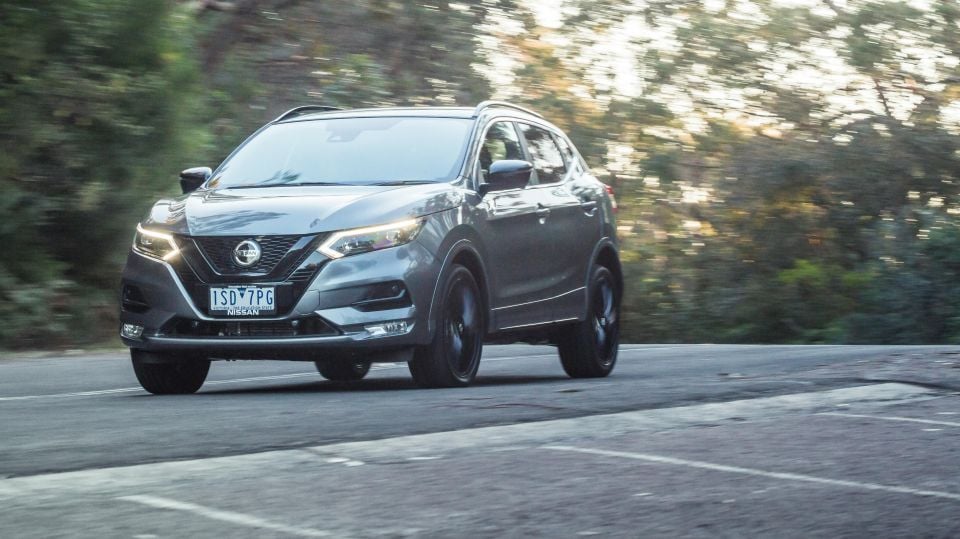
Noise insulation is decent, if not a standout in this particular specification. Models fitted with 19-inch wheels – like we have here on the Midnight Edition – are fitted with 225/45 Michelin Pilot Sport 4 performance tyres.
While this rubber may be good for grip on a twisty road, chubbier, quieter tyres would better suit the Qashqai’s sedate, family-friendly pitch. You’ll notice on smoother roads the cabin is almost silent at speed, only picking up some noticeable tyre roar on coarse-chip road surfaces.
The huge side mirrors do occasionally transmit a bit of wind whistle, too.
Another aspect of the drive we take issue with is the ride, which is just too firm for a vehicle of this type.
The big wheels, low-profile rubber, and firm suspension make for a ride that’s well-damped but unsettled over most imperfections, big or small. You’ll find yourself bobbing around regardless of the speed.
It’s a shame Nissan hasn’t opted for a cushier tune or adaptive damper system for better compliance.
Nissan has fitted a system that brakes the wheels during bumps to try and level out the ride, but it doesn’t really seem to work. It’s particularly sharp at the rear when there’s no people or cargo in the back.
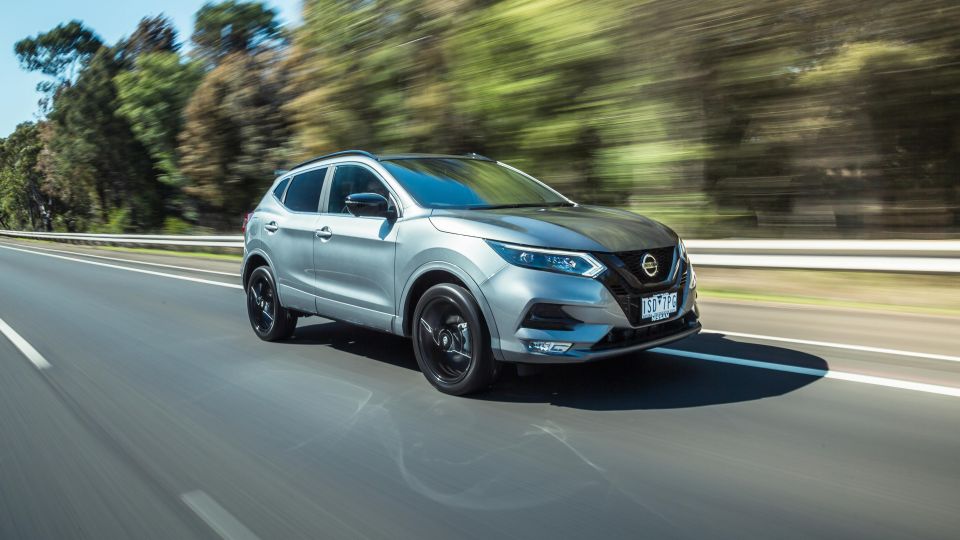
As for the handling, the Qashqai does a good enough job of limiting body roll in corners to satisfy the target demographic, though at times the light and vague steering may have you needing to add a little more lock than you initially expect. One of the first things I did after picking this car up was head to the settings menu (accessed via the driver’s cluster display) and switching the steering mode into Sport for a bit more weight.
It might sound like all I’ve done is complain, but there are still good points about the Qashqai’s drive experience.
There’s great visibility thanks to the plentiful glasshouse and huge side mirrors. The light steering may lack engagement and feedback in the bends but it makes parking a cinch, as does the handy 360-degree camera – even if the resolution could be a little better.
Standard blind-spot monitoring and rear cross-traffic alert come in handy when making gaps in city traffic or overtaking on the highway, and the adaptive LED headlights are wonderfully bright and provide excellent forward illumination (including auto high-beam).
Unfortunately Nissan still reserves its adaptive cruise control system for the top-spec Ti, and the audio-only lane departure warning system fitted here doesn’t actively keep you within the lines like the ‘Lane Intervention System’ again reserved for the Ti.
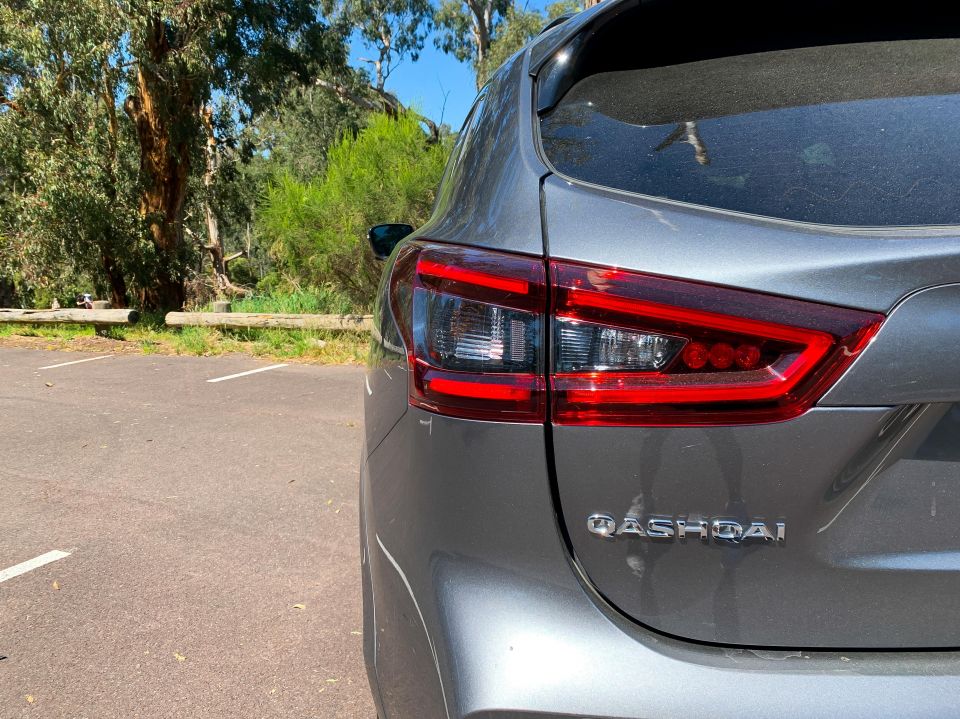
The Nissan Qashqai is covered by the company’s five-year, unlimited-kilometre new car warranty with roadside assistance and capped-price servicing for the same period.
Scheduled maintenance is required every 10,000 kilometres or 12 months, whichever comes first, with the first 50,000km or five years of servicing costing $226, $309, $236, $435 and $245, for a total of $1451 over that period.
Provided you don’t travel more than 10,000km per annum, the Qashqai is competitive with most rivals in terms of service pricing. However, the shorter service intervals are worth considering if you rack up a lot of yearly miles.
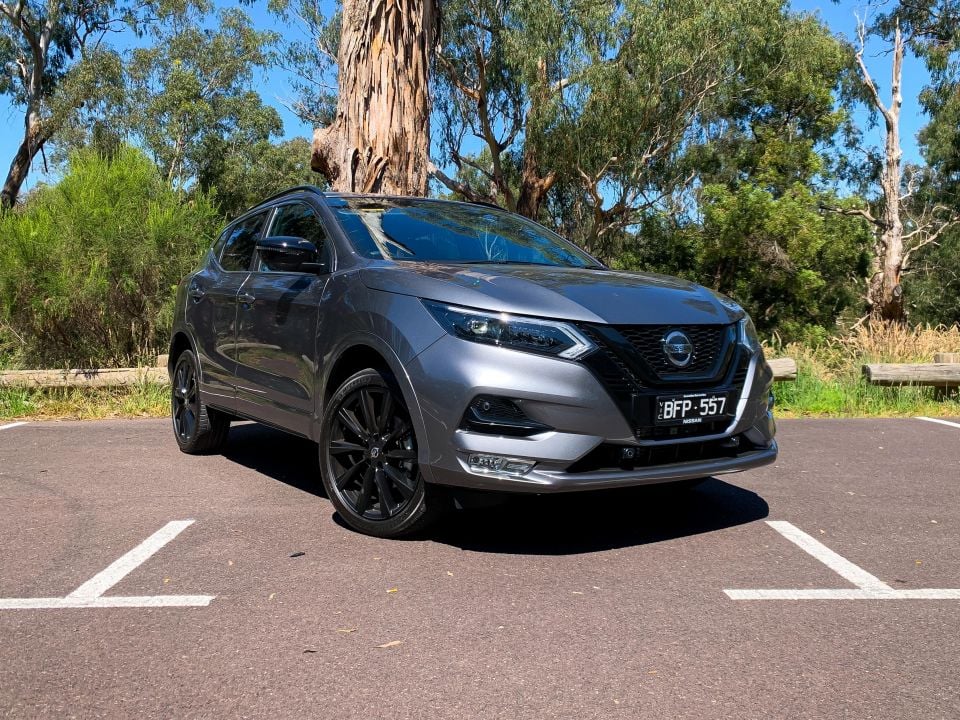
I’ll admit it, I have a soft spot for the Nissan Qashqai. It still looks great, offers heaps of space in a compact city-friendly body, and the cabin quality is among the best in the sub-$40,000 bracket.
This new Midnight Edition does a good job of keeping the design fresh and stands out against the rest of the line-up, but in all honesty the sharper aesthetic can’t hide the Qashqai’s shortcomings – nor is it the best value proposition in the range. In fact, it’s one of the worst in that regard.
If you want a Qashqai with the best features and tech it’s hard to go past the Ti, which has everything Nissan has to offer plus niceties like quilted nappa leather trim and a panoramic sunroof. It’s more befitting of the price tag, and that’s before you consider it also gets adaptive cruise control and lane-keep.
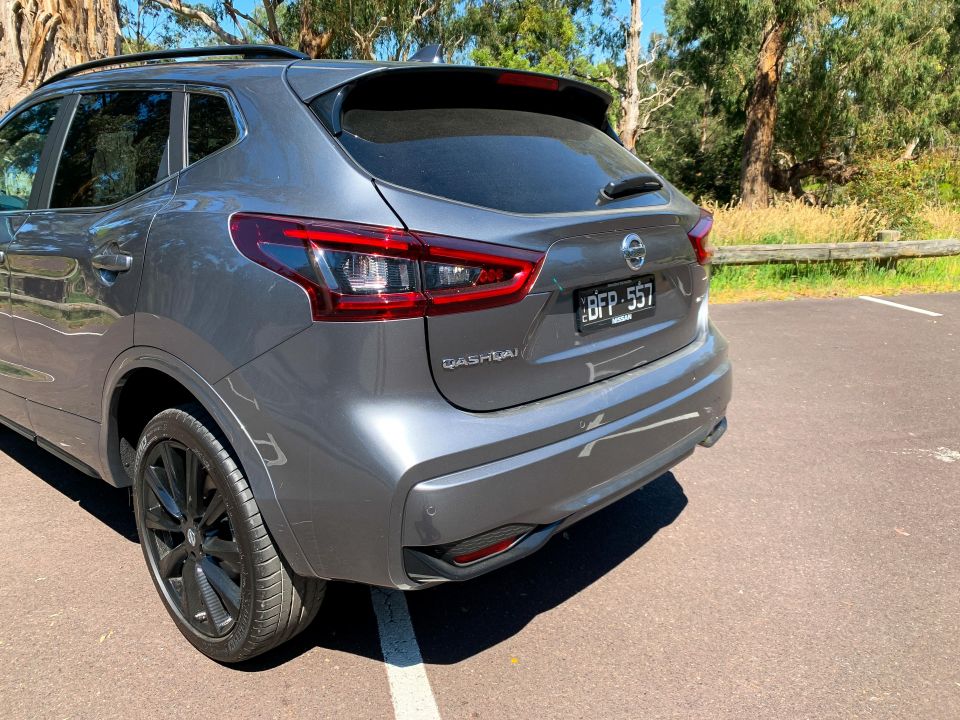
Should you want the best value with all-round comfort, the ST+ and ST-L offer a good amount of kit for a lot less money, with most of the bases covered. The ST-L also gets features the Midnight Edition lacks like powered driver’s seat adjustment and heated front seats if that means anything to you.
We’d also recommend considering the kind of driving you’ll be doing and testing the Qashqai’s performance against your needs – you may be better served by a turbocharged rival or something with a more conventional automatic transmission.
Where expert car reviews meet expert car buying – CarExpert gives you trusted advice, personalised service and real savings on your next new car.
James Wong is an automotive journalist and former PR consultant, recognised among Australia’s most prolific motoring writers.


Matt Robinson
27 Minutes Ago


Damion Smy
27 Minutes Ago


Damion Smy
15 Hours Ago


Damion Smy
16 Hours Ago


Damion Smy
17 Hours Ago


Damion Smy
19 Hours Ago